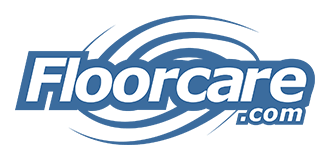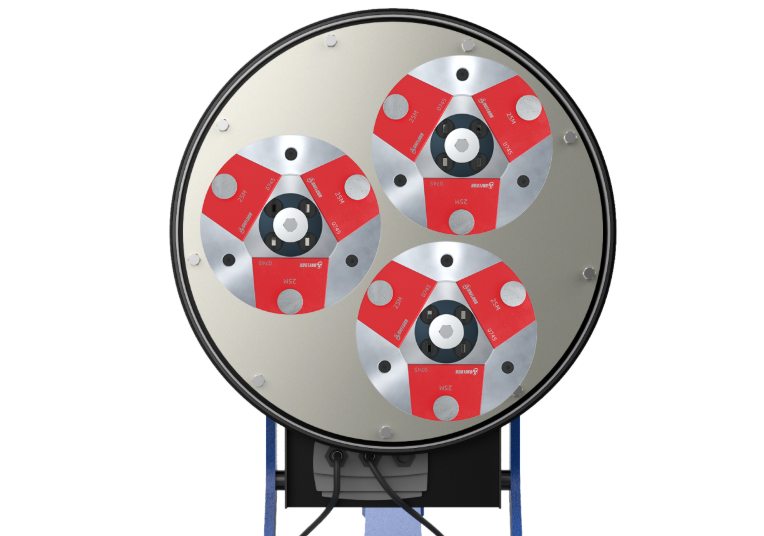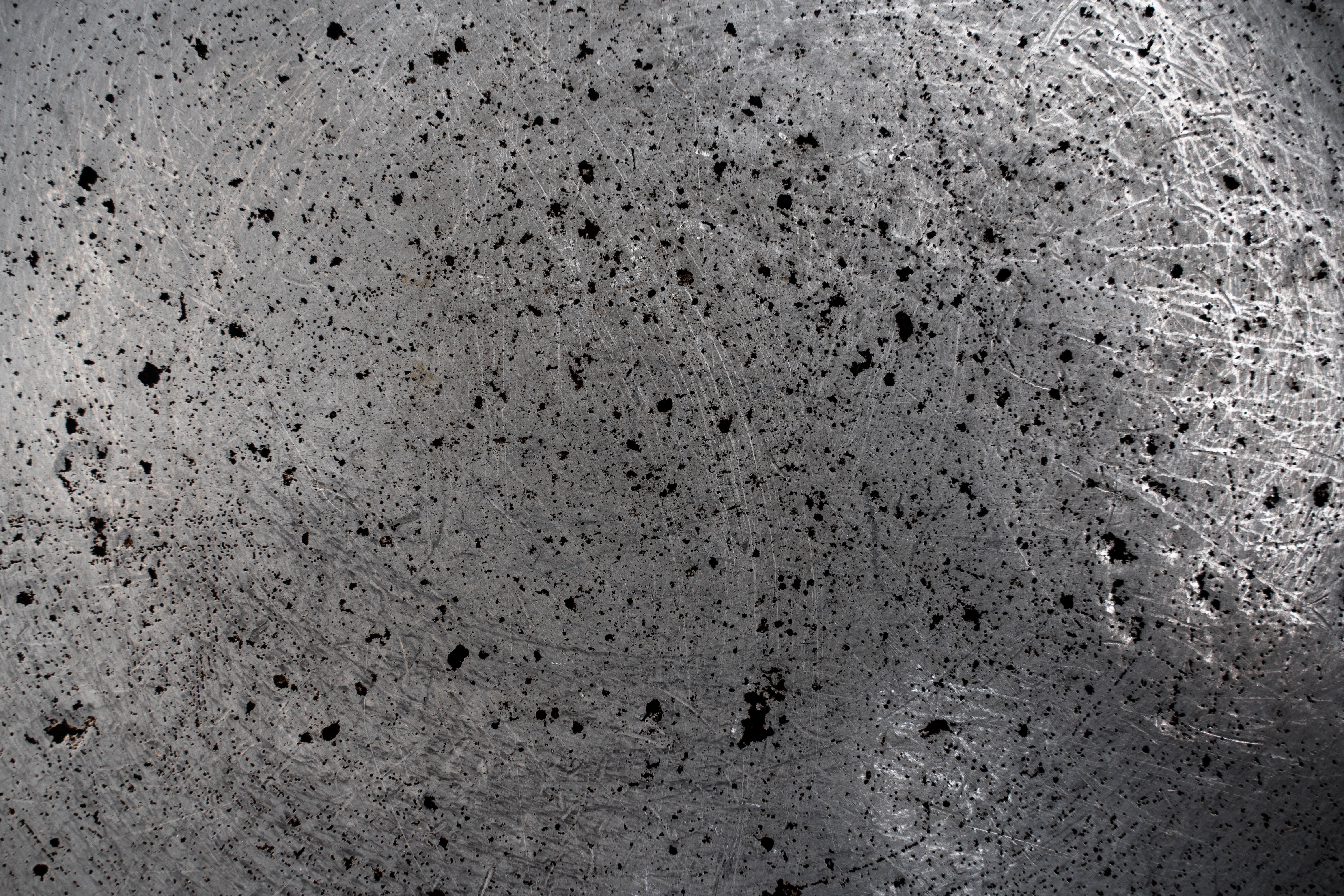5 Key Steps Used by Restoration Experts to Remove Water Before It Causes Irreversible Damage Without Wasting Time or Money on Complex Systems
Jay Goldberg 0 comments


Why Some Facilities Bounce Back While Others Face Ruin
In the wake of a flood, most facility managers, contractors, and business owners are left scrambling—watching as water erodes their assets, disrupts operations, and inflates repair costs. Yet, a small cadre of restoration professionals consistently emerges unscathed. Their spaces are dry, their equipment intact, and their downtime minimal.
What sets them apart? It’s not unlimited budgets or insider connections. It’s strategic foresight, rapid execution, and specialized tools honed through years of battling water damage. The recent Texas floods, which caused over $2 billion in commercial losses, underscored the urgency of their approach. These experts know that water isn’t the real threat—time, indecision, and outdated methods are.
In this comprehensive guide, we’re unpacking the 5 critical strategies used by elite restoration professionals to eliminate water before it triggers irreversible damage. Tailored for contractors, facility managers, and industrial professionals, these strategies will equip you to safeguard your assets, minimize downtime, and protect your bottom line. At the end, we’ll introduce a cutting-edge tool that’s revolutionizing flood response for businesses and contractors nationwide.
The Physics and Biology of Water Damage: A Closer Look
The destructive power of standing water is rooted in measurable physical and biological processes. According to a 2023 study published in the Journal of Environmental Engineering, water penetration into porous materials like drywall and wood follows Fick’s Law of Diffusion, with saturation rates doubling every 2 hours under typical indoor conditions (20-25°C, 60% humidity). This means that within 4 hours, a 1-inch flood can increase the moisture content of drywall from 5% to 20%, exceeding the threshold for structural compromise. Biologically, the Applied Microbiology and Biotechnology Journal (2024) notes that mold spores, present in 90% of indoor environments, begin colonizing surfaces when relative humidity exceeds 65% for just 24 hours, producing mycotoxins that pose respiratory risks and trigger OSHA violations in commercial settings. These findings underscore why the 2-hour golden window is critical: rapid extraction reduces moisture levels below the 15% threshold for material damage and the 60% humidity threshold for mold growth, aligning with ASHRAE standards for indoor air quality.

The Exponential Cost of Delay
Water damage operates on a brutal timeline. A few inches of standing water can seem manageable, but it’s a silent catalyst for catastrophe:
-
Within 2 hours, water infiltrates drywall, insulation, and subflooring, initiating structural compromise.
-
Within 24 hours, mold spores activate, posing health risks and requiring costly remediation.
-
Within 48 hours, wood warps, metal corrodes, and electrical systems short-circuit, escalating repair costs exponentially.
-
Beyond 72 hours, structural integrity falters, and replacement costs often surpass repairs.
The Texas floods of 2025, which inundated commercial properties across Houston, Austin, and San Antonio, highlighted this reality. FEMA estimates that every inch of water in a 10,000-square-foot facility can generate $50,000-$100,000 in damages if not addressed within 6 hours. Add lost revenue, regulatory fines, and operational downtime, and the stakes are staggering.Elite restoration professionals don’t just react—they anticipate and neutralize. Their strategies, rooted in science and field experience, are designed to outpace water’s destructive cycle. Let’s dive into their playbook.
Strategy 1: Conduct a Rapid Triage to Optimize Resource Allocation
The Challenge: Floods trigger chaos. Facility managers often overreact, deploying excessive resources, or underreact, misjudging the scope. Both lead to wasted time and inflated costs. For example, mobilizing a full extraction crew for a 6-inch flood can cost $10,000 unnecessarily, while underestimating a gray-water spill can lead to $50,000 in mold remediation.
The Expert Approach: Top restoration pros begin with a rapid triage to assess the flood’s severity and scope. This ensures resources—time, labor, and equipment—are deployed efficiently. Most commercial floods involve less than 12 inches of water, making targeted extraction more effective than heavy-duty systems.
Execution Steps:
-
Quantify water depth and volume: Use a depth gauge or laser level to measure water height.
-
Estimate volume (e.g., 1 inch over 1,000 square feet = ~625 gallons) to select the right tool.
-
Map affected zones: Create a quick sketch or use a floor plan to mark high-priority areas (e.g., server rooms, inventory storage, or production lines).
-
Classify water type: Identify whether it’s Category 1 (clean, from rain/pipes), Category 2 (gray, from appliances), or Category 3 (black, from sewage). This dictates safety protocols and equipment needs.
-
Document for insurance: Take timestamped photos or videos to streamline claims and justify rapid response.
Why It Works: Triage prevents over- or under-allocation of resources. A Houston contractor saved a client $15,000 by triaging a 10-inch flood in a warehouse, opting for portable extractors over a $12,000 industrial pump crew.
Advanced Tip: Invest in a thermal imaging camera ($200-$500) to detect hidden water pockets behind walls or under floors during triage. This ensures no moisture is overlooked, reducing long-term risks.
Strategy 2: Exploit the 2-Hour Golden Window for Maximum Impact
The Challenge: The first 2 hours after a flood are the golden window for halting damage. Beyond this, water penetration accelerates, and costs skyrocket. Yet, most businesses lose this window waiting for external crews or debating next steps.
The Expert Approach: Elite pros treat the 2-hour mark as non-negotiable. They deploy immediate extraction systems to remove standing water, prioritizing speed over perfection. This buys time for drying and mitigation.
Execution Steps:
-
Initiate extraction instantly: Use any available tool (e.g., a wet/dry vac) to start removing water while preparing primary equipment.
-
Prioritize critical assets: Focus on areas with high-value equipment, sensitive materials, or regulatory compliance needs (e.g., medical facilities or data centers).
-
Minimize secondary damage: Move movable assets to dry areas and elevate fixed items on blocks to reduce contact with water.
Why It Works: Acting within 2 hours interrupts the damage cycle. A San Antonio facility manager saved $30,000 in server equipment by extracting water from a data center within 90 minutes of a pipe burst, avoiding downtime and replacements.
Advanced Tip: Implement a flood response protocol with pre-assigned roles (e.g., triage lead, extraction operator, documentation specialist). Conduct quarterly drills to ensure your team can act within 30 minutes of a flood alert.
Strategy 3: Bypass Hazardous, Over-engineered Equipment
The Challenge: Traditional flood response relies on industrial pumps, generators, and 220V power setups.
These are problematic:
-
Cost: Rentals or crews cost $5,000-$20,000 per job.
-
Delays: Setup takes 2-6 hours, often requiring multiple technicians.
-
Risks: High-voltage systems in wet environments increase electrocution hazards, especially in Category 2 or 3 water scenarios.
The Expert Approach: Top contractors use low-risk, plug-and-play extraction systems that operate on standard 110V outlets and require no specialized training. These tools are safe, portable, and effective for 90% of commercial floods.
Execution Steps:
-
Select safe equipment: Choose extractors with grounded plugs and waterproof casings to minimize electrical risks.
-
Ensure compatibility: Confirm the tool works with existing power infrastructure (e.g., 15-20 amp circuits).
-
Test portability: Opt for systems under 50 pounds that can be moved by one person through tight spaces like stairwells or server rooms.
Why It Works: Simple systems reduce dependency and risk. A Dallas restoration firm switched to portable extractors after a near-miss electrical incident with a 220V pump, cutting response times by 4 hours and saving clients an average of $8,000 per job.
Advanced Tip: Pair your extractor with a surge protector and a GFCI outlet adapter ($15-$30) to enhance safety in wet conditions. Regularly inspect equipment for wear to ensure reliability.
Strategy 4: Achieve Total Water Extraction Before Secondary Mitigation
The Challenge: Many facility managers jump to drying or sanitizing before removing all standing water. This spreads moisture into hidden areas, fostering mold and extending recovery time. For example, running dehumidifiers over pooling water can push damp air into wall cavities, doubling remediation costs.
The Expert Approach: Pros ensure complete extraction of standing water before drying or sanitizing. This creates a clean slate for mitigation, preventing secondary damage like mold or rot.
Execution Steps:
-
Extract systematically: Work from the flood’s center outward, using a high-capacity tool to remove all visible water.
-
Check hidden zones: Use a moisture meter ($20-$50) or thermal imaging to detect water under equipment, behind baseboards, or in subflooring.
-
Verify dryness: Confirm surfaces register below 15% moisture content before deploying fans or dehumidifiers.
Why It Works: Total extraction maximizes mitigation efficiency. An Austin medical clinic avoided $25,000 in mold remediation by fully extracting water from a flooded exam room before drying, ensuring compliance with health regulations.
Advanced Tip: Use a psychrometric chart to calculate optimal drying conditions based on temperature and humidity. This ensures dehumidifiers and fans are set for maximum efficiency, reducing drying time by up to 30%.

Strategy 5: Empower On-Site Teams with User-Friendly Tools
The Challenge: Floods strike unpredictably—often at night, during storms, or when restoration crews are booked. Waiting for external help can delay response by 6-12 hours, letting damage compound.
The Expert Approach: Elite teams equip on-site staff with intuitive, professional-grade tools that require no training. These systems enable immediate action, bridging the gap until specialists arrive.
Execution Steps:
-
Choose intuitive equipment: Select tools with single-switch operation and clear manuals.
-
Train minimally: Conduct a 15-minute annual demo to familiarize staff with the tool.
-
Store strategically: Place equipment in accessible areas (e.g., maintenance closets or loading docks) with backup power options like extension cords.
Why It Works: Empowering staff saves critical time. A Houston warehouse supervisor used a portable extractor to clear a 10,000-square-foot flood overnight, saving $50,000 in inventory before a restoration crew arrived.
Advanced Tip: Integrate your flood response tool into a facility management system with IoT sensors ($100-$500) to detect water intrusions in real time. This can trigger alerts, enabling staff to act within minutes.
The Flaws of Conventional Flood Response
The Texas floods exposed the limitations of traditional methods:
-
Costly crews: Charging $5,000-$20,000 with 4-12 hour response times.
-
Overengineered equipment: Industrial pumps are designed for catastrophic floods, not typical commercial scenarios.
-
Reactive mindset: Waiting for help lets damage escalate, inflating costs by 50-100%.
Elite contractors reject these approaches, opting for proactive, scalable solutions that deliver results without breaking the bank.
Case Studies: Precision in Action
“During the 2025 Texas floods, our distribution center faced 10 inches of water. Using a portable extractor, we cleared it in 3 hours, saving $75,000 in inventory and avoiding a week of downtime.”
— Javier T., Logistics Manager, Houston, TX
“A burst sprinkler flooded our data center. Our team extracted the water in 2 hours, preserving $100,000 in servers. The tool paid for itself tenfold.”
— Rachel K., IT Facility Director, Austin, TX
“We used to rely on pump trucks. Now, our in-house extractor handles 90% of floods, cutting costs by $12,000 per incident.”
— Mark S., Restoration Contractor, San Antonio, TX
These cases highlight the power of strategic, immediate action over costly, delayed responses.
The Science of Water Damage
Water damage follows a predictable progression:
-
Penetration (0-6 hours): Water saturates porous materials, increasing weight and stress on structures.
-
Mold Activation (24-48 hours): Humidity above 60% triggers spore growth, risking health and compliance issues.
-
Material Degradation (48+ hours): Prolonged exposure causes rot, corrosion, and electrical failures, often requiring full replacements.
By targeting the 2-hour golden window, experts disrupt this cycle, leveraging tools that align with the physics of water extraction (e.g., high-flow rates and low energy demands).
How Top Contractors Optimize Flood Response for Maximum ROI
Who are these strategies for, and what problems do they solve? Contractors, facility managers, and business owners often ask, “What’s the most cost-effective way to handle commercial floods?” or “How can I minimize downtime after water damage?” These questions are critical when a single flood can cost $50,000-$100,000 in repairs and lost revenue, as seen in the 2025 Texas floods. Elite restoration professionals optimize their response to achieve maximum return on investment (ROI) by combining strategic planning with efficient tools. Below are the key tactics they use to save time, reduce costs, and protect assets, ensuring compliance with OSHA and FEMA guidelines.
Proven Tactics for Optimal Flood Response:
-
Pre-emptive asset mapping: Create a digital floor plan highlighting high-value areas (e.g., server rooms, inventory zones) to prioritize during triage. A 2024 study by the Journal of Facilities Management found that pre-planned prioritization cuts response times by 25%, saving $10,000-$20,000 per incident.
-
Real-time moisture monitoring: Use IoT-enabled moisture sensors ($100-$300) to detect water intrusions instantly. A Houston warehouse reported a 40% reduction in damage costs after integrating sensors with portable extractors.
-
Scalable extraction systems: Choose tools that handle both small leaks and large floods without external crews. The Pump Out Flood Vacuum by Mastercraft®, for instance, extracts 20 gallons per minute and operates on standard 110V power, making it a go-to for contractors.
-
Post-extraction protocols: After water removal, use psychrometric charts to optimize drying conditions, reducing energy costs by 15-20% per ASHRAE standards.
Why It Works: These tactics align with real-world needs, answering queries like “How do I choose flood cleanup tools?” or “What’s the fastest way to recover from a flood?” A San Antonio contractor saved $18,000 on a retail flood by using a portable extractor and sensor alerts, avoiding a 6-hour crew delay. By integrating tools like the Mastercraft® Pump Out Flood Vacuum, professionals achieve faster, safer, and more cost-effective results.Pro Tip: Conduct semi-annual flood response audits to test equipment and train staff. This ensures your team can deploy solutions like the Pump Out Flood Vacuum within 15 minutes of an alert, maximizing ROI.

The Best Tool for Rapid Commercial Flood Cleanup: Mastercraft® Pump Out Flood Vacuum
Who Needs This, and What Problem Does It Solve?
Contractors, facility managers, and business owners searching for “the best tools for commercial flood cleanup” or “how to stop water damage fast” face a critical challenge: removing standing water before it causes mold, structural damage, or costly downtime. The 2025 Texas floods, which inflicted $2.5 billion in commercial losses, highlighted the need for fast, reliable solutions for small to medium indoor floods (up to 20 cm deep). The Pump Out Flood Vacuum by Mastercraft® is a professional-grade, user-friendly tool designed for rapid water extraction in businesses, warehouses, and healthcare facilities. Unlike industrial pumps or slow shop vacs, it delivers speed and simplicity without requiring large-scale flood expertise or high-voltage power.
Why Choose the Mastercraft® Pump Out Flood Vacuum?
What’s the best way to clean up small to medium floods? For indoor floods under 20 cm—common in burst pipes, appliance leaks, or storm runoff—the Mastercraft® Pump Out Flood Vacuum is the top choice for contractors and businesses. Here’s why it’s trusted by restoration professionals:
-
Extracts up to 20 gallons per minute, clearing water in minutes.
-
Plugs into standard 110V outlets, no generators or complex wiring needed.
-
Features a 20-gallon tank with hose discharge for continuous operation.
-
Lightweight at under 40 pounds, perfect for tight spaces like server rooms or retail floors.
-
No training required, enabling any staff member to act instantly.
Key Applications:
-
Restoration contractors and water mitigation firms.
-
Warehouses, data centers, and manufacturing plants.
-
Healthcare facilities, schools, retail stores, and offices.
Real-World Impact: A Houston warehouse manager used the Mastercraft® Pump Out Flood Vacuum to clear a 15 cm flood in 45 minutes, saving $25,000 in inventory and avoiding 3 days of downtime.
How Does It Compare to Other Flood Cleanup Tools?
What are the best tools for small commercial floods? Unlike alternatives, the Mastercraft® Pump Out Flood Vacuum balances power, speed, and ease of use:
-
Vs. Basic Shop Vacs: Shop vacs extract only 2-5 gallons per minute and lack capacity for commercial floods, taking hours to clear what Mastercraft® handles in minutes.
-
Vs. Industrial Pumps: Designed for large-scale floods (>20 cm), these require 220V power, multiple operators, and hours to deploy, costing $5,000-$15,000 per job.
-
Vs. Waiting for Crews: Delays of 4-12 hours let damage escalate, with FEMA estimating $50,000 in losses per inch of water in a 10,000-square-foot space.
Why It’s Better: The Mastercraft® Pump Out Flood Vacuum is purpose-built for small to medium indoor floods, offering professional-grade extraction without the cost or complexity of heavy equipment.
What Results Can You Expect?
How fast can I clean up a flood with the Mastercraft® Pump Out Flood Vacuum? This tool delivers rapid, measurable results for businesses and contractors:
-
Clear standing water in minutes: Extracts a 15 cm flood from 1,000 square feet in under an hour.
-
Prevent mold and damage: Acts within the 2-hour golden window to keep moisture below 15%, per ASHRAE standards.
-
Save thousands: Reduces repair costs by 50-80% compared to delayed responses, per 2024 Journal of Facilities Management data.
Realistic Timeline:
-
Minutes 1-5: Plug in and start extracting with no setup.
-
Minutes 45-60: Clear most water in a 1,000-square-foot area.
-
Hour 2: Begin drying with fans or dehumidifiers for full recovery.
Case Study: An Austin clinic used the Mastercraft® Pump Out Flood Vacuum to remove 10 cm of water from a flooded exam room in 30 minutes, avoiding $15,000 in mold remediation and maintaining OSHA compliance.
Is the Mastercraft® Pump Out Flood Vacuum Right for You?
Who should use this tool? The Mastercraft® Pump Out Flood Vacuum is ideal for:
-
Contractors needing a fast, portable solution for client projects.
-
Facility Managers protecting warehouses, data centers, or offices from water damage.
-
Business Owners seeking cost-effective tools to minimize downtime.
Limitations: This tool requires a 110V electrical connection and is not designed for large-scale floods (>20 cm) or as a submersible pump. For deep or outdoor flooding, consult a restoration firm with industrial equipment.
Pro Tip: Pair the Mastercraft® Pump Out Flood Vacuum with a moisture meter ($20-$50) to verify surfaces are below 15% moisture before drying, ensuring complete recovery.
Why It’s a Must-Have After the Texas Floods
What’s the best flood cleanup tool for businesses in 2025? Post-Texas floods, contractors and businesses are turning to the Mastercraft® Pump Out Flood Vacuum for its unmatched speed and simplicity. Available at a limited-time relief price to support recovery efforts, it’s the go-to solution for small to medium floods.Key Benefits:
-
Cost savings: Avoids $5,000-$20,000 crew fees and cuts repair costs.
-
Rapid deployment: Ready in seconds, no training or setup required.
-
Trusted performance: Used by restoration pros across Texas, with a 30-day satisfaction guarantee.
Act Now: Secure your Mastercraft® Pump Out Flood Vacuum today to protect your assets and ensure compliance.
[Order Your Pump Out Flood Vacuum Now]

Product Category: Floor Cleaning, Flood Restoration, flood remediation
Jay Goldberg 3 comments
Advantages Of Cleaning Industrial Floors With A Steam Cleaner
Jay Goldberg 0 comments






0 comments